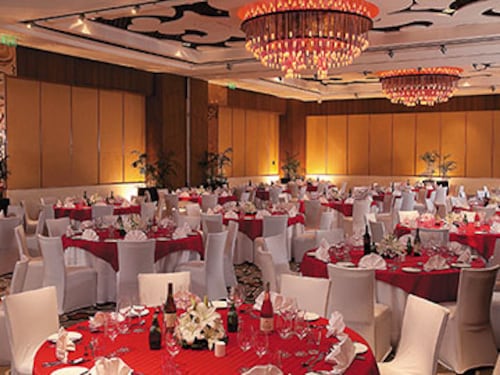How India's Hotel Industry Is Beating The Downturn
The economic slowdown has had little impact on growth in India's hotel industry. Here's how players will handle this dichotomy


Everyone in the hotel world has an India strategy they’re either already here or en route, drawn by a market under-served for decades.
This despite the fact that luxury hotel rooms that cost an average of Rs 10,429 a night at peak in 2008, were selling for Rs 6,850 in 2013, almost half that. Occupancy rates have also reduced to barely above break-even.
Understandably, industry pundits are hesitant to predict its fortune in 2014. Rattan Keswani, deputy managing director at Lemon Tree Hotels, says, “The trend is expected to continue however, a lot will depend on the election results and confidence levels in the second half of 2014-2015.”
How do hotels deal with a downturn and rapid growth, both at the same time?
Here are a few trends that are likely play out in 2014.
Brand swaps rise
Brand-swapping was once seen only in developed markets. According to Achin Khanna, managing director of HVS consulting practice in South Asia, “The growing number of new brands and competition has resulted in a lot of brand conversion. We will see a lot more in 2014.”
While ITC has taken over four Raviz properties in Kerala, Lemon Tree replaced Golden Tulip in Jaipur and the Meridien in Ahmedabad.
Douglas Martell, InterContinental Hotels Group (IHG), says, “Converting an existing hotel property is an easier way to add to the growth of the brand portfolio. Although it involves costs to pace up the brand standard, hoteliers look forward to more conversions as it helps increasing the revenue of the group.”
IHG is bringing in its Crowne Plaza and Holiday Inn brands to replace Hilton and its own Double Tree brands in two hotels in Delhi (these properties are owned by Eros Resorts and Hotels Ltd).
Restructuring and refinancing
The commodity-fuelled high of 2008 also saw a gaggle of hotel companies announcing big dollar investments. Unfortunately, just like in other sectors where companies are struggling with huge debts, hoteliers are paying the price of ambition. Some of the biggest names continue to be overleveraged. The Indian Hotels Company has debts of close to Rs 4,000 crore and losses of Rs 390 crore in 2012-13. The Leela Group and the Kamat Group are among those who have gone through financial restructuring. 2014 will see more rejigs.
Banking on infrastructure
In late 2013, the Indian government included hotel projects costing over Rs 200 crore and convention centres of over Rs 300 crore under the ‘infrastructure sub-sectors’ category. This helps companies in two ways: Loans get cheaper and repayment periods get longer. The Rs 200 crore cut-off, though, has put a damper on the hopes of mid-scale and budget hotel owners, as the average cost for them to build a property is much less.
More M&As
Biggies like Indian Hotels hogged the headlines for high-profile acquisitions in the past now, smaller players are expected to share the limelight. These include Lemon Tree, Duet Hotels and InterGlobe. While Lemon Tree is on the lookout for more after buying Clarion Hotel in Bangalore in 2013, Duet Hotels is searching for properties in Goa, Bangalore, Mumbai and Delhi-NCR. The Bhatias of InterGlobe Hotels, who also own IndiGo Airlines, are among the frontrunners to buy GMR’s Novotel at Hyderabad airport. The winner will be announced in the next few months.
MICE trap
All over India, hoteliers are now focusing on the MICE (meetings, incentives, conferences, exhibitions): Everyone is offering facilities for corporate users. One magnet for this segment is Delhi’s Aerocity, which will soon have 11 hotel properties two are open already. with more expected through 2014. Keswani of Lemon Tree says, “Normally, this segment brings in between 8-10 percent of the hotels business. Our new hotels will have larger MICE areas, particularly in the metros.”
Signed food
In the distant closed economy years, an Indian luxury hotel would typically have a Mughlai restaurant, a 24-hour café, and maybe a continental restaurant. These offerings no longer cut the mustard. Hoteliers are bringing in signature restaurants that either specialise in international cuisine or celebrate local flavours. Needless to say, F&B income is a growing revenue stream for most hotels.
IHG has developed signature restaurants like Chao Bella, the Italian and Chinese specialty restaurant, in most of its Crowne Plaza properties. In its Kochi property, the company started Trilogi, a seafood restaurant highlighting local cuisine. In Mumbai, Koh at InterContinental Marine Drive was conceptualised by international chef Ian Kittichai and serves Thai and Southeast Asian cuisine. Leela Palaces recently launched Le Cirque and Megu—both renowned New York restaurants—along with the acclaimed Maccioni Restaurant Group. JW Marriott has Akira Back (named after the famous Japanese chef) at its Delhi Aerocity hotel.
Also, Customised rooms
There is no limit to how much one can tweak and customise hotels rooms. For instance, the L-shaped seating arrangements in the rooms at the Hyatt Place are a stylish alternative to the chair-and-table fixtures guests rarely use. For executives who travel with their families, Lemon Tree has introduced a 1,250 sq.ft duplex suite in its latest opening at Delhi’s Aerocity. The two-level suite has a living room, a ‘king’ bedroom and a separate dining area. More experiments are being tried out by hoteliers all over the country.
First Published: Mar 06, 2014, 06:31
Subscribe Now